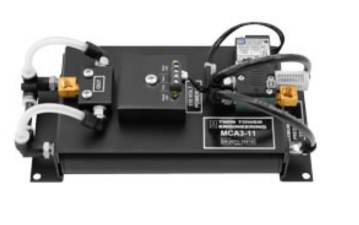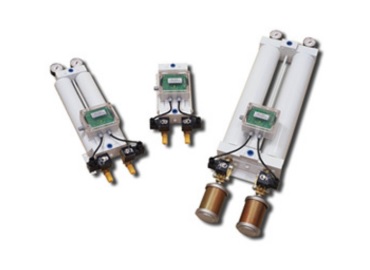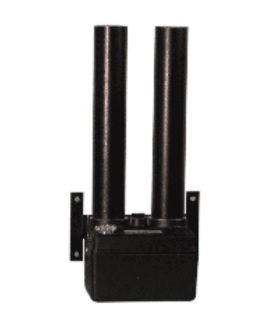The Indispensable Role of CO2 Adsorbers for Compre…
Posted by AVP on Dec 26th 2023
In the intricate world of laboratory science, precision is paramount. Every detail counts, and even the air we breathe and use in experiments is no exception. This is where a CO2 adsorber for compressed air in laboratories comes into play, proving itself as an essential component in maintaining the integrity of laboratory experiments and equipment.
Why Do Laboratories Need CO2 Adsorbers?
In laboratories, maintaining an environment conducive to accurate and reliable experimentation is crucial. One often overlooked factor is the air quality, specifically concerning the levels of carbon dioxide (CO2). Here's a straightforward look at why CO2 adsorbers are vital in these settings:
- Chemical Reaction Interference: CO2 can react with various chemicals and reagents. This reaction may lead to unpredictable behavior of the substances involved, potentially skewing experimental results.
- Impact on Organism Growth: Research involving cells, bacteria, or other living organisms can be significantly affected by CO2. Exposure to this gas might alter their growth patterns or development, leading to inaccurate study outcomes.
- Instrument Accuracy: High-precision instruments, such as spectrometers and microscopes, are sensitive to environmental conditions. CO2 can cause background noise, making it challenging to analyze samples correctly and derive accurate data.
PUREGAS CO2 Adsorbers: Distributed by AVP
PUREGAS understands these challenges and have developed a range of CO2 adsorbers to combat them. Let's take a closer look at what they offer:

1. MCA Series: Dual Functionality Masterpiece
The MCA Series is a stellar example of efficiency. By combining the removal of CO2 and moisture in one, these adsorbers save space and cost. Using 13X molecular sieve in a pressure swing adsorption process, the MCA Series delivers dry, CO2-free air consistently.

2. CAS Series: Robust and Reliable
Designed for resilience, the CAS Series tackles CO2 head-on. These adsorbers, also utilizing 13X molecular sieve, ensure that only dry, CO2-free air is delivered, maintaining the integrity of your experiments.

3. VCD Series: Precision and Efficiency
For those requiring even more precise control, the VCD Series is your go-to. With its efficient adsorption process, it delivers air with less than 1 PPM CO2 and moisture levels below -100°F dew point. This series is perfect for applications demanding ultra-pure air.
Broad Applications in Laboratories
CO2 adsorbers for compressed air in laboratories are not just a one-trick pony. Their versatility shines across various applications:
- FTIR Spectroscopy: By removing CO2, these adsorbers ensure that absorption spectra remain untainted, vital for accurate analysis.
- TOC Analysis: With CO2 out of the equation, getting precise TOC values becomes a reality.
- CEMS: For regulated environments, consistent CO2-free air is crucial for accurate monitoring.
- NMR Spectroscopy: Background noise from CO2 is a thing of the past, ensuring clearer NMR spectra.
- Environmental Chambers: Controlling CO2 levels is essential for studying organisms under controlled conditions.
- Zero Air Systems: For systems needing ultra-clean air, CO2 removal is indispensable.
The Science of CO2 Adsorbers for Compressed Air in Laboratories
Grasping the function of CO2 adsorbers for compressed air in laboratories involves delving into the core technology that drives these systems – the Pressure Swing Adsorption (PSA) process. It's a fascinating blend of chemistry and engineering, designed to address a specific problem in laboratory environments: the removal of carbon dioxide from air used in sensitive experiments and processes.
How Does the Pressure Swing Adsorption (PSA) Process Work?
- Compressed Air Introduction: The process begins by introducing compressed air into the adsorber. This air often contains various contaminants, including moisture, hydrocarbons, and most notably for our purposes, CO2.
- Passage Through Molecular Sieve Beds: This air is then passed through beds filled with a substance known as 13X molecular sieve. The choice of this material is not random; it's specifically selected for its ability to target and capture CO2 molecules. The 13X molecular sieve has a unique structure that creates a perfect trap for CO2, effectively filtering it out from the air.
- Adsorption of CO2: As the air passes through these beds, CO2 molecules in the air are attracted to and held by the sieve material. This is where the ‘adsorption’ in Pressure Swing Adsorption comes into play. It's a process where a substance (in this case, CO2) adheres to the surface of another material (the 13X molecular sieve).
- Release and Regeneration: The final step in the PSA process involves reducing the pressure within the adsorber. This reduction in pressure causes the CO2 molecules to detach from the molecular sieve. The CO2 is then released back into the atmosphere. This step is crucial as it regenerates the adsorbent beds, making them ready for another cycle of air purification
Why Is the PSA Process So Effective for CO2 Removal?
- Selective Adsorption: The 13X molecular sieve is remarkably selective, meaning it specifically targets CO2 molecules while allowing other components of the air to pass through. This selectivity ensures a high purity level of the resulting CO2-free air.
- Regenerative Capability: The ability to regenerate the adsorbent beds is a key feature. It means that the adsorbers can operate continuously over extended periods without the need for frequent material replacement.
- Energy Efficiency: Compared to other methods of air purification, PSA is relatively energy-efficient. Since the process primarily relies on pressure changes rather than heat or chemical reactions, it conserves more energy.
Advantages of Using Media Beds for CO2 Adsorption
Opting for media beds in CO2 adsorbers brings a bounty of benefits:
- High Efficiency: Achieving CO2 removal levels below 1 ppm is a walk in the park.
- Continuous Operation: They don't tire, providing a steady supply of CO2-free air.
- Low Maintenance: A little goes a long way – occasional replacement of the adsorbent media keeps them running smoothly.
- Cost-Effectiveness: When it comes to value for money, these systems are hard to beat.
Choosing the Right CO2 Adsorber
Selecting CO2 adsorbers for compressed air in laboratories isn't a one-size-fits-all affair. Consider the required CO2 removal level, the flow rate of compressed air, inlet pressure and temperature, space constraints, and, of course, your budget.
Partnering with Air Vacuum Process (AVP) for Your Laboratory Needs
So, you've got the inside scoop on CO2 adsorbers, but where to from here? Look no further than Air Vacuum Process (AVP). As an authorized distributor of CO2 adsorbers for compressed air laboratories and a host of other essential equipment, we've been serving a diverse range of industries since 1997. From oil & gas to electronics, we've got you covered.
AVP isn't just about products; it's about solutions. We understand that each lab, each project has unique needs. That's why we don't just sell; we partner with you to find the perfect fit for your requirements. With our CO2 adsorbers, you're not just buying a piece of equipment; you're investing in reliability, efficiency, and the future of your research.
Ready to elevate your laboratory's air purity? Let us help you find the ideal CO2 adsorber for compressed air for your laboratory. Contact us today!
